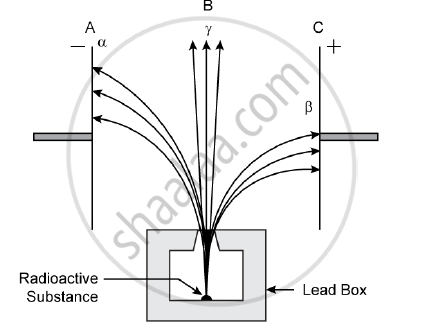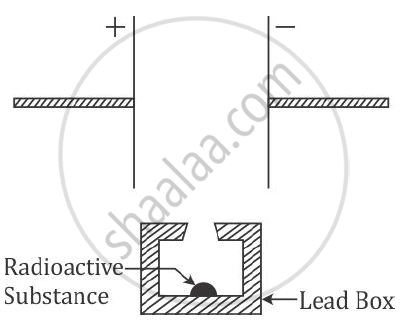Advertisements
Advertisements
Question
Radiations given out from a source when subjected to an electric field in a direction perpendicular to their path are shown below in the diagram. The arrows show the path of the radiation A, B and C. Answer the following questions in terms of A, B and C.

1) Name the radiation B which is unaffected by the electrostatic field.
2) Why does the radiation C deflect more than A?
3) Which among the three causes the least biological damage externally.
4) Name the radiation which is used in carbon dating.
Solution
1) Gamma radiations
2) Because of the mass of B particle is less than that of α, hence radiation deflects more than A.
3) `gamma` rays
4) beta radiation `""_6^14C -> ""_7^14N + ""_(-1)^0beta^(-)`
APPEARS IN
RELATED QUESTIONS
Answer the following questions based on a hot cathode ray tube
Name the charged particles
What are free electrons?
An element `""_ZS^A` decays to `""_85R^222` after emitting 2 α particles and 1 β particle.
Find the atomic number and atomic mass of the element S.
Represent the change in the nucleus of a radioactive element when a β particle is emitted.

Complete the diagram as given above by drawing the deflection of radioactive radiations in an electric field
Name two radioactive substances.
Name a common device where a hot cathode ray tube is used.
State one use of radio-isotopes.
Unit of radioactivity is _______
A radioctive sample decays `7/8` times its original quantity in 15 minutes. The half-life of the sample is ______.
